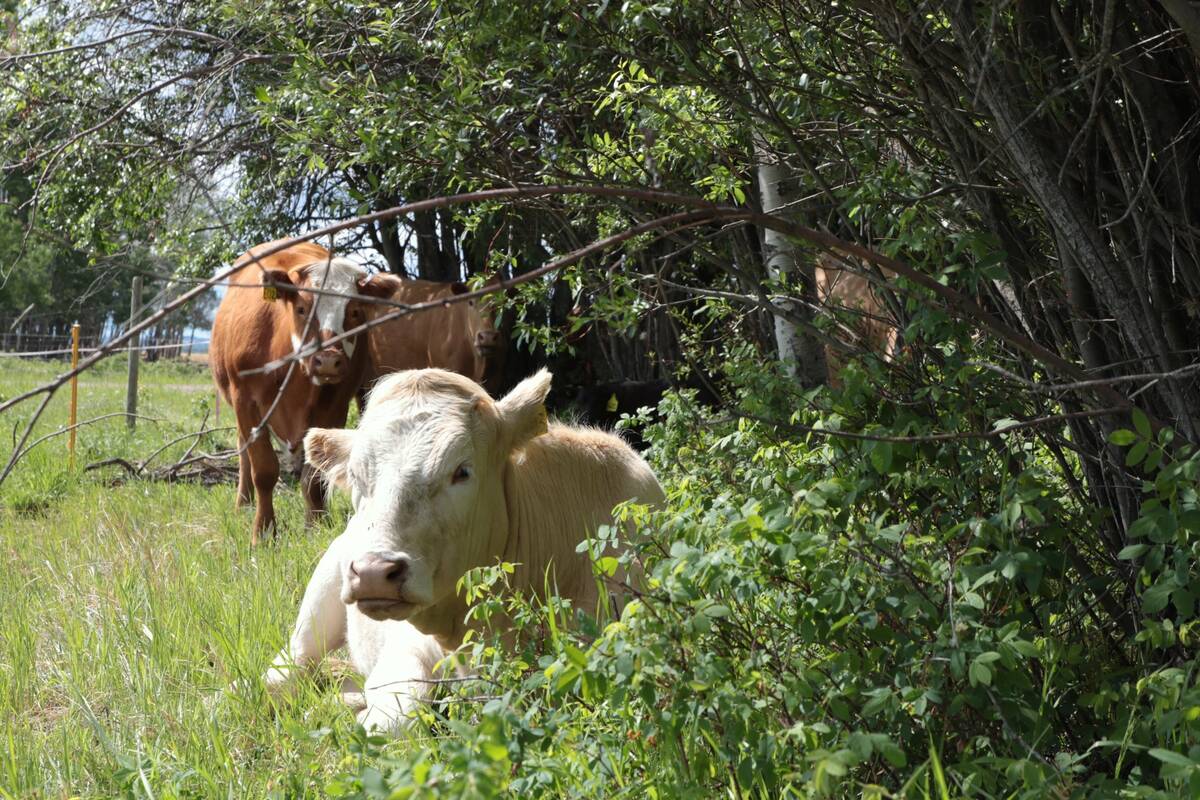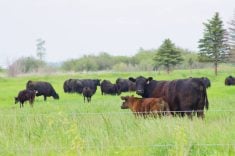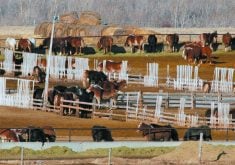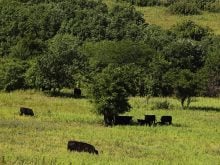Each year in our industry, especially when speaking to producers, I notice either new problems, management practices that are no longer being followed or areas we can fine tune what we are doing.
Sometimes there are new products that have a definite place in cattle production, or we find easier ways to do things.
Products are changed due to developing resistance or the need for alternatives.
Read Also

House ag committee to undertake several studies
The House of Commons standing agriculture committee has set its agenda for the coming months. Members began the fall sitting with a two-hour update on international trade
It’s a global market, and Canada can occasionally find itself on the outside looking in.
Regulatory changes can make our lives more complicated as more paperwork is introduced, and sometimes the speed of commerce slows down.
In this column, I am going to provide a variety of tips that can work on western Canadian cow calf operations, both commercial and purebred.
Stomach ulcers are blamed on a number of factors, but research by Dr. Murray Jelinski has found they always happen in the transition from milk to grass consumption at around six weeks, resulting in one per cent death loss.
Some producers are creeping calves with very soft palatable grass hay and access to their own minerals to decrease incidence.
Clostridial vaccination is a possible prevention method, but whether it is or isn’t, the vaccine is a core one for young calves.
Speaking of clostridial vaccination, a new broader spectrum product has just come on the market.
It is called Covexin 10 but includes clostridium perfringens A.
This is pretty rare in beef cattle and is seen more in mature dairy cows, but I did talk to a purebred producer who had it diagnosed in younger calves that were dying.
Discuss it with your herd veterinarian because like all vaccines that have tetanus, it does not include histophilus somnus.
The latest information released by the Beef Canada Research Council is worth looking at.
It’s a review of proper vaccinating techniques, which is always nice to have, not only for new employees or producers but also for those who have been in the business for a long time because over time, we can develop bad habits.
Producers pay good money for vaccines, so it’s important to look after them and take a little more time and thought to administer them properly.
Vaccination is still a huge part of producers’ biosecurity program, so keep abreast of new developments.
The BCRC put out information on core vaccines necessary in the cattle industry, and I would say pretty much all veterinarians would agree with 80 to 90 per cent of it.
Histophilus somnus should be considered a core vaccine because it is added to a lot of clostridial vaccines, and I remember when we saw the brainers and heart forms of it in our calves, especially in feedlots post weaning.
If we do see it now, it’s because there is a lack of a booster shot at the proper time.
We sometimes need to pat ourselves on the back for how far the industry has come in the last two to three decades, from much less navel infection and joint issues in young calves by improving colostral consumption and hygiene to far fewer calving issues because of proper selection for birth weight and body type in our herd sires.
Almost no dehorning is necessary now due to polled genetics, and cancer eye has a super low incidence because of dark pigment in almost all the breeds. Even Charolais animals have a darker pigment, resulting in a super low incidence.
We used to perform a lot of surgeries for this condition at our clinic because of the complete white faces, and now they are a rarity.
We now try not to over-treat lameness because we know that NSAIDs, in a lot of cases, are a better choice. In bad cases, we can get a diagnosis before treatment.
Each case is different and may simply require convalescence, trimming, surgery or, if something is incurable, shipping.
I used to do a lot of claw amputations. They are easy to recognize and worth doing, depending on the value of the animal and stage of pregnancy. It might even make sense in feeder animals.
The success rate is very high.
Some feedlots have trimming tilt tables because they have recognized the recovery success rate and the growth potential, not to mention the animal welfare implications.
If this service is required, look for clinics that will do them.
The procedure is preferably done on a tilt table, but occasionally they can be done in a squeeze chute with good access, depending on which claw is involved.
Your veterinarian will tell you their comfort level.
Record high cattle prices are helping speed up the decision to ship or treat as producers weigh the prognosis for success based on past experience.
Both producers and veterinarians are more engaged now on the animal welfare side of livestock production.
Again, treating often involves NSAIDs.
A multitude of options are on the market, and veterinarians have their preferences as to which ones they want to use in each situation.
Any NSAID is likely better than no NSAID in almost all situations, but producers must pay attention to withdrawal times.
We are fortunate in Canada that in most places, winter frosts and frozen yards and fields prevent transmission of lots of problems, eliminating the need for year-round treatment for internal and external parasites.
This slows the development of resistance.
We still need to be cognizant of this and not over-treat.
As well, treat for flies only when they reach the economic threshold. One life cycle in the summer may likely do it for most climates.
Foot-and-mouth disease and bovine tuberculosis have received a lot of attention lately because of recent outbreaks.
Prevention needs to focus on border security, and our cattle organizations need to continually lobby the federal government on this.
I have great faith in our canine friends and the work they do, not only in drug detection but all citrus fruit, plants and meat. They are specialists and get lots done.
I am not a trained epidemiologist, but it appears that a new strain of bovine TB has been found in these last few outbreaks that hadn’t been detected before and aren’t found in surrounding herds, trace-outs, trace-ins or wildlife.
Where is it coming from?
We have one of the best surveillance systems in place during slaughter, which is how we find these cases in the first place.
I also realize the Canadian Food Inspection Agency’s handling of reportable diseases is always under scrutiny from our trading partners.
My last couple of points involve equipment.
When buying applicator guns, look for ones that can be used on different products.
Clean them out and maintain them like you do your vaccine guns. All things will wear out, so parts should be replaced often.
For those just starting out in the cattle business, chutes, alley systems, maternity pens and calf chutes are available at auction.
Any squeeze chute or maternity pen is better than nothing because they will help you treat your animals appropriately and on time.
Some may need a bit of repair, but I see chutes that are 50 years old or older that are still functioning well if maintained.
This will make your life easier as well as maximizing animal welfare and minimizing injuries when handling.
Equipment can be upgraded as your herd grows, and herds larger than 200 head warrant a hydraulic chute. Expanding producers will seldom sell older chutes because they will be moved to a pasture to be be used out there.
I hope that at least a couple of these points will resonate with you.
As well, if you ever feel a health area should be covered in these columns, plant the seed with one of the veterinary writers. Your idea or question will likely help others.

















